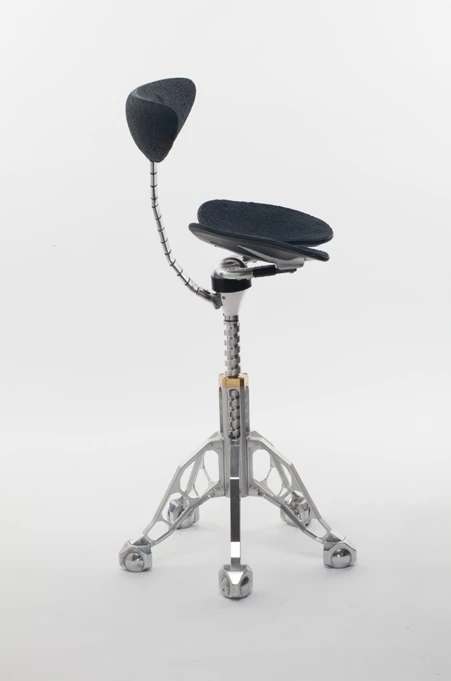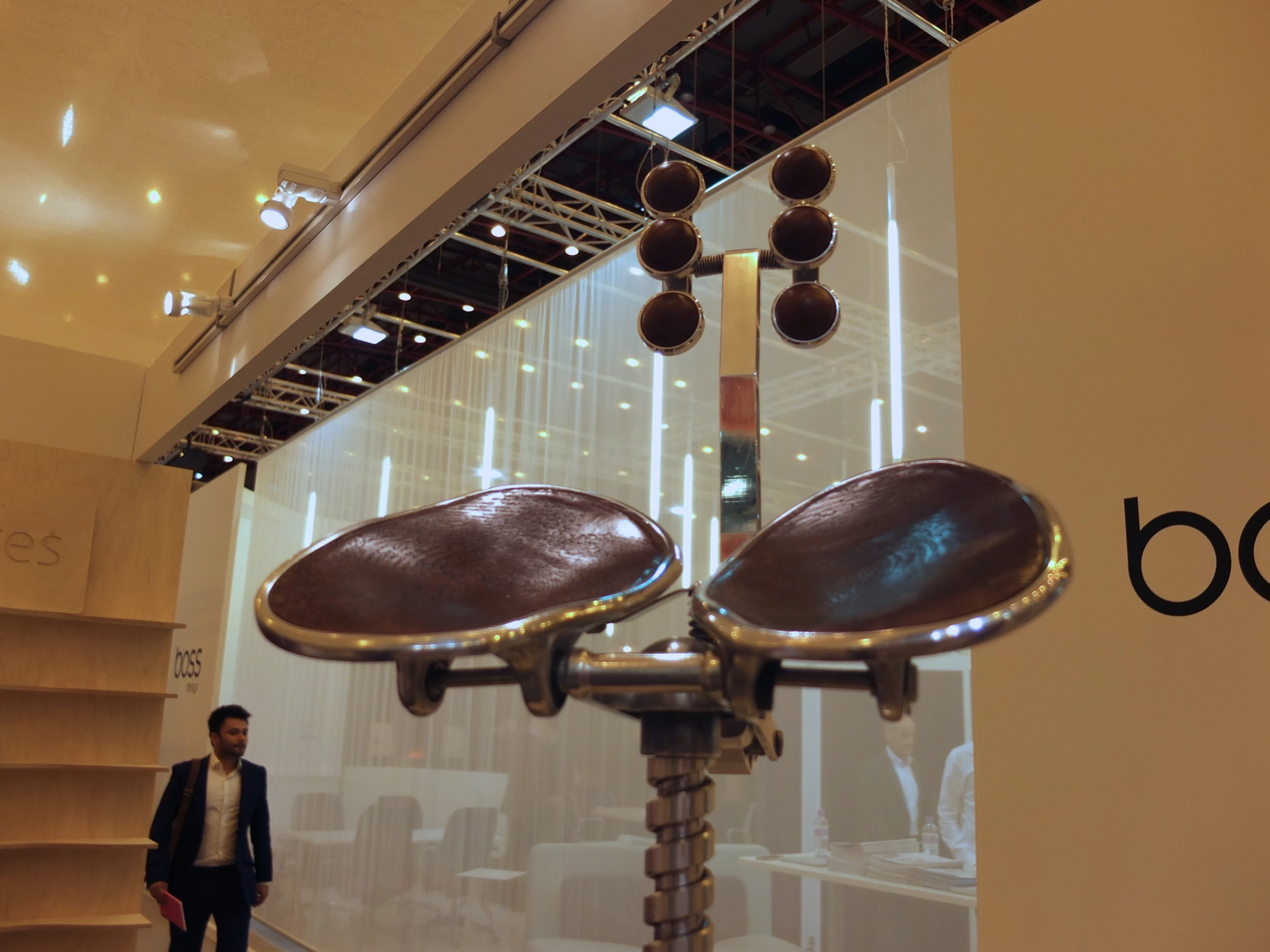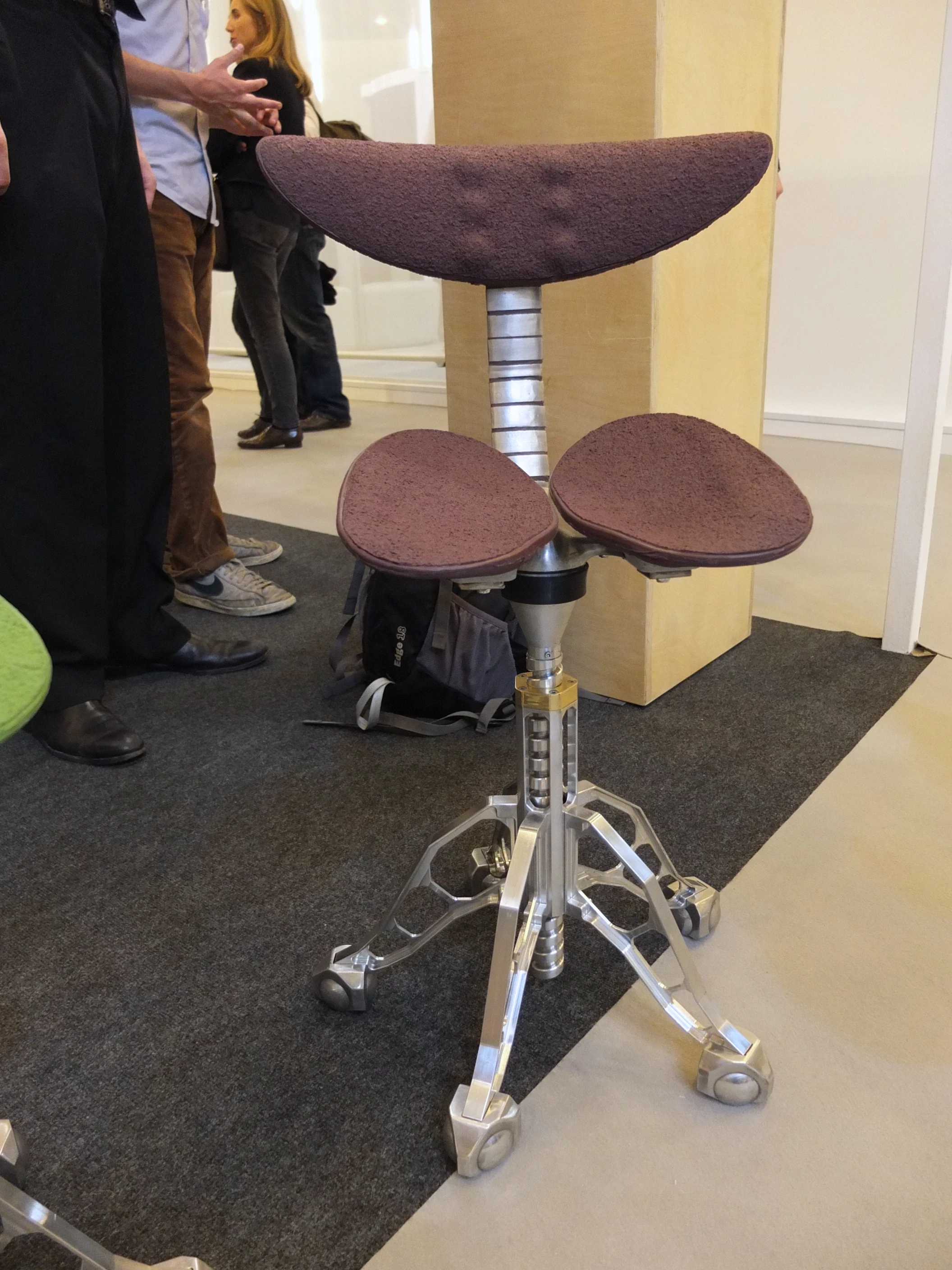"It became readily apparent that many of the problems my patients were experiencing had been created by the lack of a suitable chair," says Simon Freedman, an osteopath of 20 years. "But as hard as I looked, I just couldn't find a chair to recommend to them. I decided to see if I could make one myself." After a claimed 15 years of development, Simon has announced his FreedMan Chair, which he says is the only chair that allows the spine and pelvis posture that we experience standing up.
According to the press release announcing its unveiling, the chair allows its user to maintain the natural curvature of the spine in both forwards and sideways directions.
The key to maintaing the spine's natural curvature, Freedman claims, is a thigh angle of 27 degrees from the horizontal. The chair has been designed around maintaining this angle comfortably, in a relaxed posture, without slipping from the chair.
Freedman claims that nine out 10 people have unequal leg lengths, which he says has been "totally overlooked" by designers of other chairs. The seat pads of the FreedMan chair can tilt from side to side, allowing users to find their natural sideways posture.
I gave the chair a little a little test during its unveiling at 100% Design at the end of September, and though my short sit was far from sufficient to draw any firm conclusions, it did leave me intrigued. I tried a backless version of the chair, and because of the angle of my legs, I didn't feel I was missing anything by not being able to lean back. And because of the side-to-side tilting of the seat, I found the chair was able to accommodate my natural inclination to fidget a bit without my having to shift my bottom on the seat. For the brief time I used it, it struck me as being much more comfortable than it looked. Though the FreedMan Chair does have a back rest, the intention as I understood it is that you should not lean back on it with an great force.
Talking to Freedman at the event he recounted the story of an elderly lady who tried the chair. "Watch this," she said, before standing up without using her arms for leverage, as, apparently, she'd usually need to do.
But will this help to remedy back trouble? I have no idea, but the press release quotes University of Huddersfield osteopath Professor Kim Burton, who gives what sounds like a reasonable, measured soundbite. "The philosophy of trying to help people sit as they stand is interesting," he says. "This chair will certainly alter the usual mechanics of sitting, which people may find offers a useful alternative."
When it launches at retail, the FreedMan Chair is expected to be sold for £800 (about US$1,300), but Freedman intends to launch a Kickstarter campaign very soon, selling 500 chairs at a cost price of £350 ($560). Trying before buying is obviously not a bad idea.
Source: FreedMan Chair




















